Activity › Discussion › Science & Technology › Briefly, describe what happens when the process of photosynthesis Occurs?
Tagged: @photosynthesis
-
Briefly, describe what happens when the process of photosynthesis Occurs?
Posted by Aayush on June 23, 2023 at 11:39 amAnswer Briefly
Gnanendra replied 11 months ago 3 Members · 2 Replies -
2 Replies
-
::
- Photosynthesis is the process in which solar energy is trapped by chlorophyll to convert carbon dioxide and water to produce food in the form of glucose.
- It is produced in plants where chlorophyll is present inside the chloroplast as trapping the solar energy initiates the process.
- The water comes from the root while the carbon dioxide enters the stomata.
- The end product is glucose used as food or stored in the cells.
- The three episodes that occur during the photosynthesis cycle are:
-
- Light energy is absorbed by chlorophyll, which breaks down water molecules into oxygen and hydrogen.
- Light energy is converted into chemical energy. The reduction of carbon dioxide leads to the formation of carbohydrates.
- Plants absorb carbon dioxide from the atmosphere through the stomata and then enter the photosynthetic cycle of Calvin. The pores enable gas interchange.
-
This reply was modified 11 months ago by
Shruti Thakar.
-
This reply was modified 11 months ago by
Shruti Thakar.
-
::
Photosynthesis is a vital process that occurs in plants, algae, and some bacteria. It is the primary means by which energy from sunlight is converted into chemical energy in the form of glucose. Photosynthesis involves a series of complex reactions that take place within specialized structures called chloroplasts, primarily located in plant leaves.
The process of photosynthesis can be divided into two main stages: the light-dependent reactions and the light-independent reactions, also known as the Calvin cycle.
During the light-dependent reactions, which take place in the thylakoid membranes of the chloroplasts, sunlight is absorbed by pigment molecules, mainly chlorophyll. This energy is used to split water molecules into hydrogen ions (H+), electrons (e-), and oxygen (O2) through a process called photolysis. The released oxygen is then released as a byproduct into the atmosphere. The energized electrons move through a series of protein complexes called the electron transport chain, generating ATP (adenosine triphosphate), a molecule that stores energy, and NADPH (nicotinamide adenine dinucleotide phosphate), a coenzyme used in the next stage.
In the light-independent reactions, or Calvin cycle, which occur in the stroma of the chloroplasts, the ATP and NADPH produced in the light-dependent reactions are utilized. Carbon dioxide (CO2) from the atmosphere is combined with the ATP and NADPH to produce glucose. This process is called carbon fixation and is catalyzed by an enzyme called RuBisCO (ribulose bisphosphate carboxylase/oxygenase). Glucose is a carbohydrate that serves as a source of energy for the plant and is also used for growth and development.
Photosynthesis is not only essential for plants to produce their own food but also plays a crucial role in the Earth’s ecosystem. Through photosynthesis, plants remove carbon dioxide from the atmosphere, releasing oxygen as a byproduct, which is vital for the survival of other organisms, including humans. Additionally, photosynthesis forms the basis of the food chain, as organisms that cannot perform photosynthesis rely on consuming plants or other organisms that do photosynthesize.
Overall, photosynthesis is a complex and fascinating process that enables plants to harness the energy of sunlight, convert it into chemical energy, and produce oxygen and glucose, contributing to the sustenance of life on Earth.
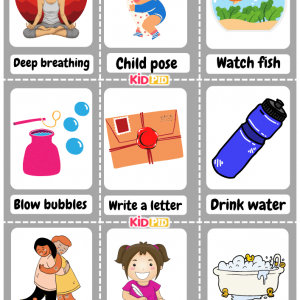 Calming Strategies Flashcards
Calming Strategies Flashcards 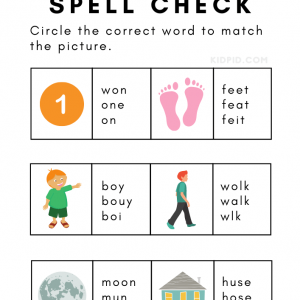 Spell Check Worksheets for Grade 1
Spell Check Worksheets for Grade 1  Color the Shapes Worksheet
Color the Shapes Worksheet  Mini-break Exercise Flashcards
Mini-break Exercise Flashcards 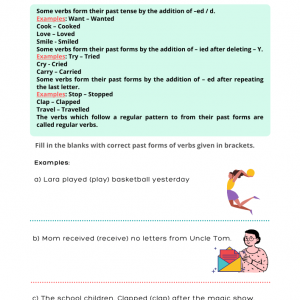 Past Tense of Regular Verbs Printable Worksheets for Grade 2
Past Tense of Regular Verbs Printable Worksheets for Grade 2 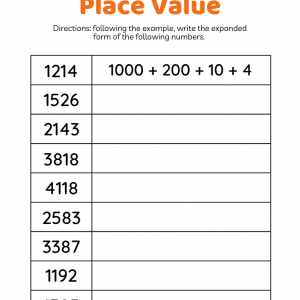 Math Expanded Form Worksheets for Grade 3
Math Expanded Form Worksheets for Grade 3  Sight Words Purple List Flashcards
Sight Words Purple List Flashcards 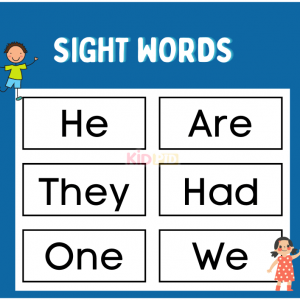 Sight Words Red List Flashcards
Sight Words Red List Flashcards